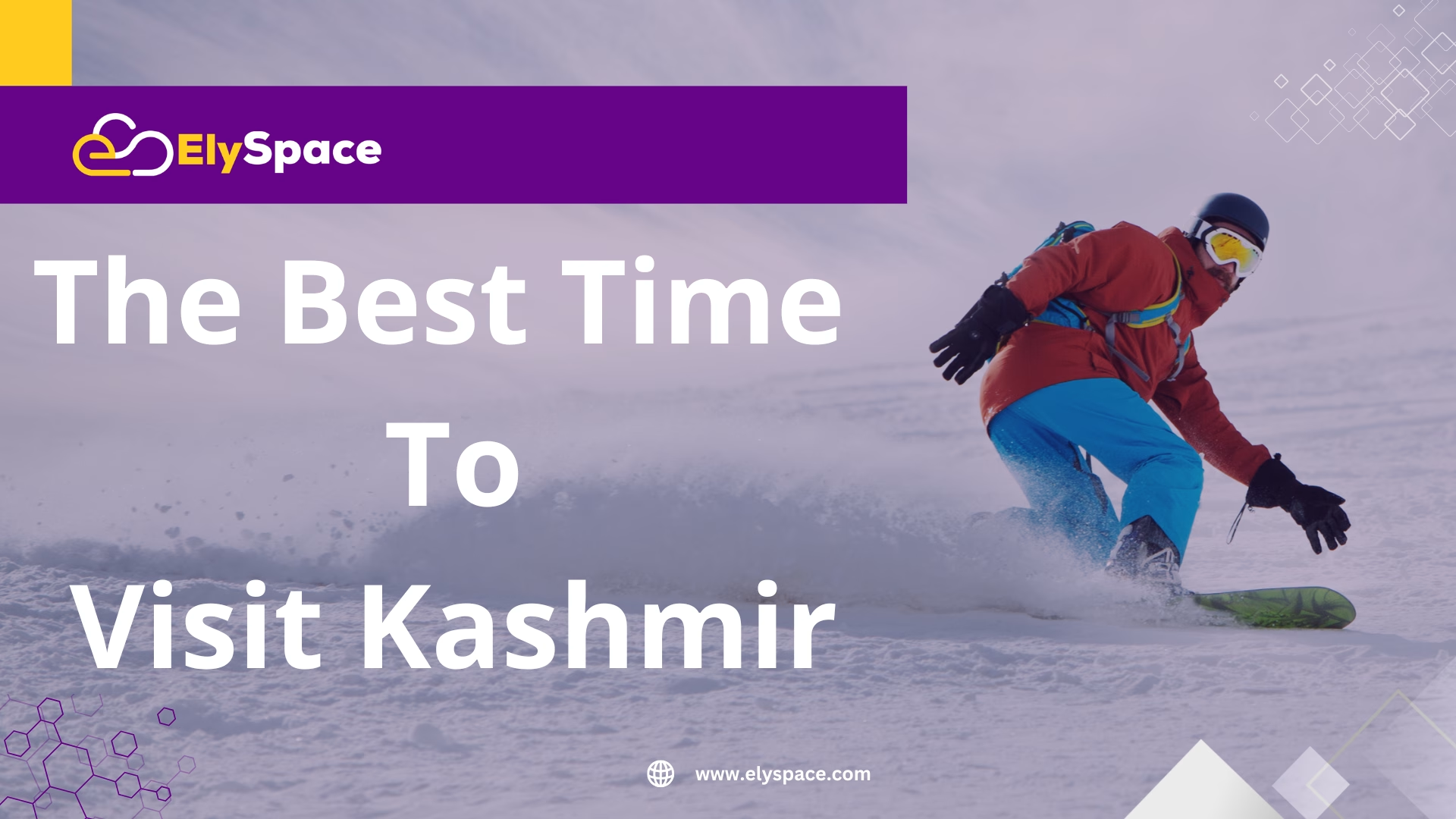Scenic view of Kashmir valley highlighting the best time to visit Kashmir with clear skies and snow-capped mountains
Introduction
Kashmir, often referred to as the “Paradise on Earth”, is one of the most breathtaking places in India, boasting stunning views, rich cultural heritage, and unforgettable memories in every season. But the The Best Time to Visit Kashmir: Complete Travel Guide for 2025 matters in terms of your travelling experience, budget, and everything else on which you want your trip to be based. This comprehensive travel guide outlines the best time to visit Kashmir, taking into account various factors such as weather, activities, and overall crowds, both in-season and out-of-season, so you know when to go.
General Overview of Climate and Seasons in Kashmir
Kashmir has a temperate climate with four seasons, each of which has its own experiences and attractions. Learning about the seasons is essential for planning a trip.
Kashmir’s 4 Seasons
Spring (March to May): Moderate temperatures; flowers bloom; good weather overall
Summer (June to August): Warm days and cool nights; monsoon
Autumn (September to November): Cool temperature, clear skies, harvest
Winter (December to February): Cold temperature, snowfall, winter sports
Average temperatures and weather patterns
Monthly temperature averages guide:
January: -2°C to 12°C (28°F to 54°F)
April: 9°C to 23°C (48°F to 73°F)
July: 16°C to 30°C (61°F to 86°F)
October: 4°C to 21°C (39°F to 70°F)
The Best Time to Visit Kashmir: Seasonal Breakdown
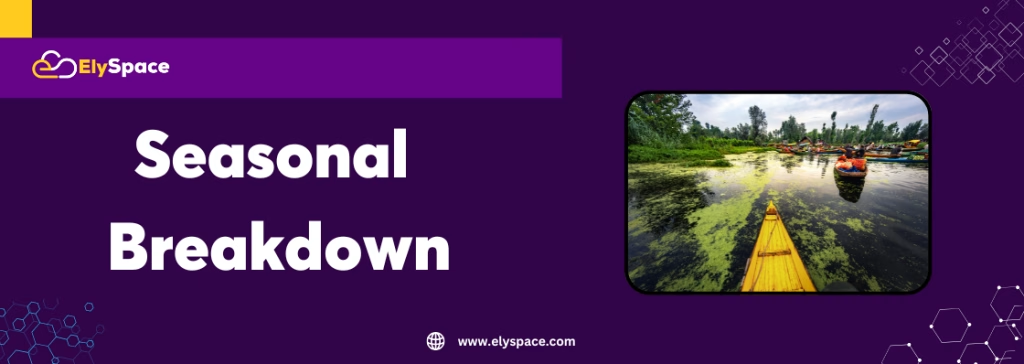
Seasonal breakdown in Kashmir showing spring tulip blooms, summer greenery, autumn foliage, and winter snowfall
Kashmir in Spring (March to May) – Best Time
Many agree that Spring is the best time to see Kashmir, as there are lovely weather conditions and breathtaking scenery.
Why Spring is the Best:
- Enjoy comfortable temperatures at around 15 degrees Celsius up to 30 degrees Celsius.
- Experience the renowned tulip gardens in full bloom
- Be in the beautiful, clear weather with good visibility
- Have nice weather for sightseeing and outdoor experiences
- See the delightful blossoming of almonds and cherries.
Spring Highlights:
- Tulip Garden Festival: Asia’s largest tulip garden blooms in April
- Perfect weather for a Shikara ride: take a Shikara ride on Dal Lake
- Start of the trekking: Moderate hiking for the snow-melted trails is accessible starting in June.
- More photography opportunities: beautiful landscapes and flower blooming opportunities.
- Comfortable place to stay: a houseboat will level up your travel experience.
Spring Travel Tips:
- Make reservations as soon as possible. The demand is high this time of year.
- Many prices will peak in the summer months.
- Pack for all temperatures. Make sure you have lots of layers.
- Don’t forget the sunscreen and sunglasses.
- Do the outdoor activities in the morning.
Summer in Kashmir (June to August) – Peak Tourist Season.
Summer is the warmest time of year, with the longest days, so it is an ideal time for sightseeing and outdoor activities while enjoying the multiple advantages of summer.
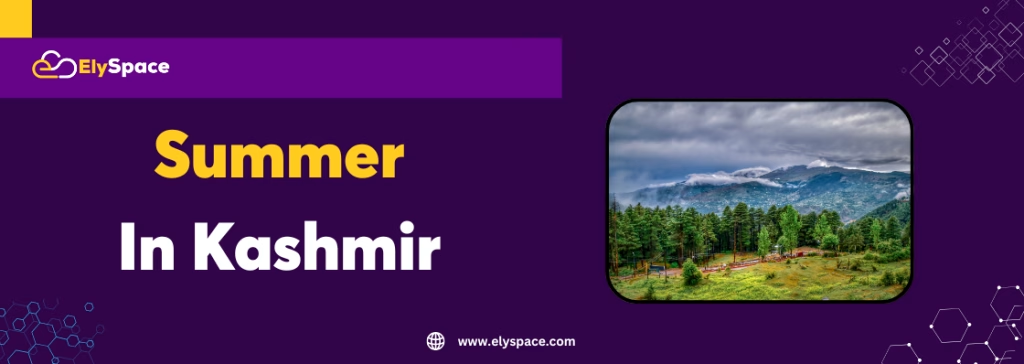
Lush green valleys and clear blue skies during summer in Kashmir
Summer advantages:
- Warm and comfortable temperatures (20°C to 35°C)
- Access to places for the most sightseeing time.
- All tourist attractions and activities are available and open.
- The weather is great for high-altitude treks.
- Beautiful conditions for camping and adventure sports.
Summer activities:
- Amarnath Yatra: Sacred pilgrimage season.
- High-altitude trekking: Many challenging trails you can access.
- River rafting: Thrilling opportunities for water sports.
- Camping: Comfortable outdoor sleeping/conditions.
- Local cultural events and festivals will be celebrated.
Five-Star Hotels in Kashmir: A Luxurious Escape to Paradise
Absorbent for consideration in the summer:
Most crowds and most dollars
Increase in finding accommodations.
Rainfall possibilities during the monsoon
Heavy traffic congestion on the more popular routes.
Planning for April and making reservations.
Kashmir in Autumn (September to November) – Shoulder season
Autumn in Kashmir offers some of the best scenery in Kashmir; enjoy great weather and fewer crowds.
Advantages of Autumn:
Delta – clear, crisp weather with minimal rainfall
Vibrant fall foliage with changing colors
Ideal temperatures for anything you wish to do
Fewer tourists than the summer crowds.
Better availability for accommodations and rates.
Highlights in Autumn:
Chinar trees: massive colors in Autumn
Harvest season: enjoy local culture and tradition.
Mountain views: our favourite photo views by far.
Comfortable trekking: hiking in Autumn = ideal weather.
Apple picking: partake in local harvest experiences.
Kashmir in Winter (December to February) – Off Season
Kashmir can transform into a snowy paradise in the winter months, providing different and unique perception for adventure type people.
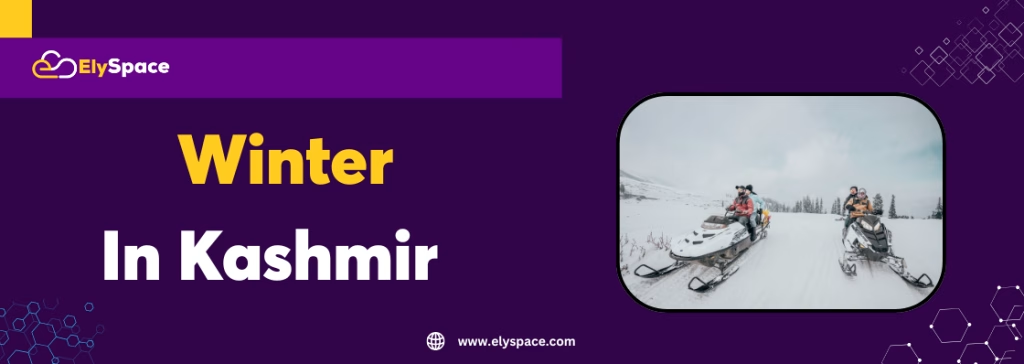
Snow-covered landscapes and pine trees during winter in Kashmir
Winter Attractions:
Snowy landscapes and frozen lakes
Winter sports and skiing
Unique culture and lifestyle
Extensive savings for accommodation
Serene, less crowded, and peaceful tourist places
Winter Activities:
Skiing: World-class skiing in Gulmarg
Snowboarding: Natural slopes for winter sports
Ice skating: Frozen lakes
Snow trekking: Different winter trekking opportunities await
Photography: Enjoy the stunning snow landscapes
Winter Considerations:
Bitterly cold, ranging from -10°C to 10°C
Flight cancellations due to bad weather
Those who don’t take Zanskar, snow-clad hilly terrain roads, may not be completely open
Ray days and shorter daylight to trek/hike
Cumbersome, heavy winter gear/clothing
Month-by-Month Travel Guide
January – Winter Wonderland
Weather: Very cold, with heavy snowfall.
Best For: Winter sports, snow photography, and if on a budget.
Avoid If: You cannot handle cold
February – Almond Blossoms
Weather: Cold but improving with some snowfall.
Best For: Skiing, winter sports, and experiencing almond blossoms.
Avoid if you’re looking for warmth,
March – Spring is Awakening
Weather: Mild and can be pleasantly cold in the daytime, with some rain.
Best For: Sightseeing, spring flowers, pleasant weather.
Avoid if: You’re looking for a sun guarantee.
April – Tulip Season
Weather: Great temperatures, clear blue skies
Best For: Tulip gardens, photography, outdoor activities
Avoid if: You don’t like crowded destinations
May – Spring in Full Swing
Weather: Warm days, cool nights, good weather
Best For: Close to any activities, trekking, excursions
Avoid if: You are on a budget. Prices in peak season.
June – Start of Summer
Weather: Warm and comfortable, long days
Best For: High-altitude treks, camping, adventure sports, etc.
Avoid if: You do not like crowds and are not prepared to pay high prices.
July – Start of Monsoons
Weather: Warm and occasional rain
Best For: Amarnath yatra, indoor activities, cultural experiences, etc.
Avoid if: you do not like wet weather.
August – Late Summer
Weather: Warm, after rain
Best For: Festivals, cultural experiences, river activities, etc.
Avoid if: you want guaranteed dry weather.
September – First Signs of Autumn
Weather: Cool, pleasant days, clear blue skies
Best For: Photography, comfortable sightseeing, fewer crowds, etc.
Avoid if: you want warmer temperatures.
October – Peak Autumn
Weather: Cool, crisp and clear, beautiful fall colours.
Best For: Fall colours, comfortable weather, experiences around harvest, etc.
Avoid if: You need warm weather to swim.
November – Late Autumn
Weather: Cool, clear blue skies, on the cusp of winter.
Best For: Budget travel, sensory and peaceful sightseeing, sustainability, cultural experiences, etc.
Avoid if: You have your trips booked around high-altitude destinations.
December – Winter Footprint is Registered
Weather: Cold, beginning of snow season.
Best For: Early-season winter sports, inexpensive accommodations, and limited tourist activity.
Avoid if: You are not equipped for cold weather.
Best Time For Activities
Trekking and Hiking

Travelers trekking through scenic mountain trails in Kashmir .
How Your Hosting Provider Affects SEO Performance: Complete 2025 Guide
Best Months: April to October Best
Conditions: May-September for high-altitude treks.
Considerations: Weather stability, when trails open and when it is safe
Photography and Sightseeing
Best Months: April to October,
Best Light: September to November, straddling autumn colours.
Considerations: Clouds for clear skies, good visibility, interesting subjects
Winter Sports and Skiing
Best Months: December – March Peak
Demand: January – February
Considerations: Snow conditions, weather stability, resort operations
Houseboats
Best Months: April – October Best
Experience: May – September
Considerations: Weather comfort, lake conditions, service availability
Budget Travel
Best Months: November – March (excluding peak winter)
Best Exchange: January – March
Considerations: Lower prices, less packed, basic conveniences
Regional Differences in Kashmir
Srinagar – The Capital of Kashmir
Best Time to Visit: April to October
Highlights: Dal Lake, Mughal Gardens, Houseboats.
Weather: Usually milder than the other regions.
Gulmarg – The Ski Resort Capital
Best Time to Visit: December to March (skiing), May to September (general tourism)
Highlights: Skiing, Saltoro Gondola, Mountain scenery.
Weather: Coldlike all high altitude destinations.
Pahalgam – Valley of Sheep
Best Time to Visit: April to October
Highlights: Trekking, River activities, scenery.
Weather: Nice summers, cold winters.
Sonamarg – A Gold Meadow
Best Time to Visit: May to September
Highlights: High altitude trekking, glaciers.
Weather: Sometimes likened to a mountain jungle. Open during summer months only.
Leh Ladakh (Outlying Kashmir)
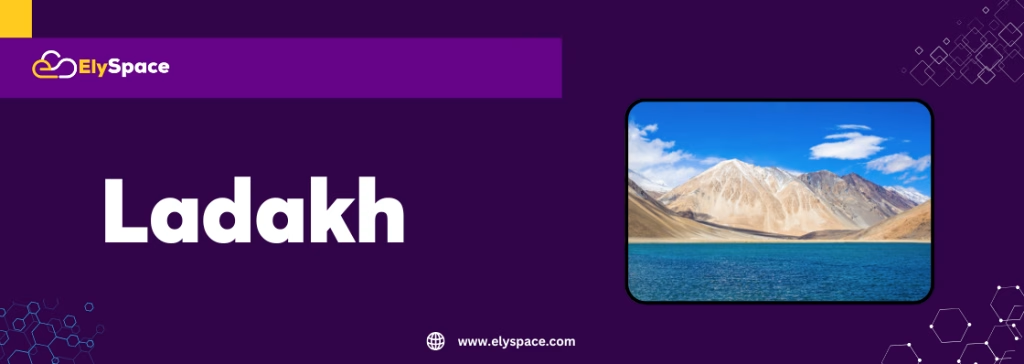
Stunning mountain landscape with clear blue skies and monasteries in Ladakh
Best Time to Visit: May to September
Highlights: High altitude desert, monasteries, adventure sports.
Weather: Bitterly cold winter, pleasant summers.
Gulmarg – Ski Resort Capital
Best Time: December – March (skiing), May – September (general tourism). Generally cooler than other areas due to higher altitude.
Highlights: Skiing, gondola rides, mountains.
Weather: Extreme cold in winter, pleasant summers
Climate Patterns and Weather Considerations
Climate and Temperature Variability
Kashmir is characterized by extreme variability of temperature, both by season and topography.
Altitude Considerations
Srinagar (1,585m): Moderate temperatures throughout the year
Gulmarg (2,650m): Cooler temperatures, greater snowfall
Pahalgam (2,130m): Moderately cool summers, cold winters
Sonamarg (2,800m): Shorter summer, ample winter snow
Precipitation Patterns
Rainfall Occurrences:
Monsoon: July to September
Winter: Mainly snow, December to February
Driest months: October to November, March to April
Weather Issues
Potential issues:
Rapid changes in weather in the mountains
Flight cancellations in winter
Road closures due to snow
Altitude sickness in high elevation areas
Tourist Crowds and Pricing

Tourists at popular spots in Kashmir during peak season while capturingphotographs.
Peak Season (April to June, September to October)
Characteristics:
Highest number of tourists
The highest price for accommodations
Pre-booking required
Crowded attractions and activities
Shoulder Season (March, November)
Characteristics:
Moderately crowded and priced.
Generally good weather. Services have generally better availability.
A balanced experience.
Off-Season (December to February, July to August)
Characteristics:
The lowest number of tourists.
The most significant price drop.
Limited or no services and activities.
Some unique seasonal experiences.
Essential Packing Guide by Season
Spring Packing – March to May
Essentials to Pack:
Light layers or moderate clothing
Comfortable walking shoes
Light rain jacket
Sunscreen and sunglasses
Camera for flower pictures
Summer Packing – June to August
Essentials to Pack:
Cotton clothing with breathable fabric
Rain gear and umbrella
Insect repellent
Hiking boots for day treks
Sun protection accessories
Autumn Packing – September to November
Essentials to Pack:
Warm layers and fleece
Waterproof jacket
Comfortable walking shoes
Warm accessories (hat, gloves)
Photography gear
Winter Packing – December to February
Essentials to Pack:
Heavy winter clothing
Insulated boots
Thermal base layers
Warm accessories and gloves
Moisturizer for dry skin
Season Booking Tips
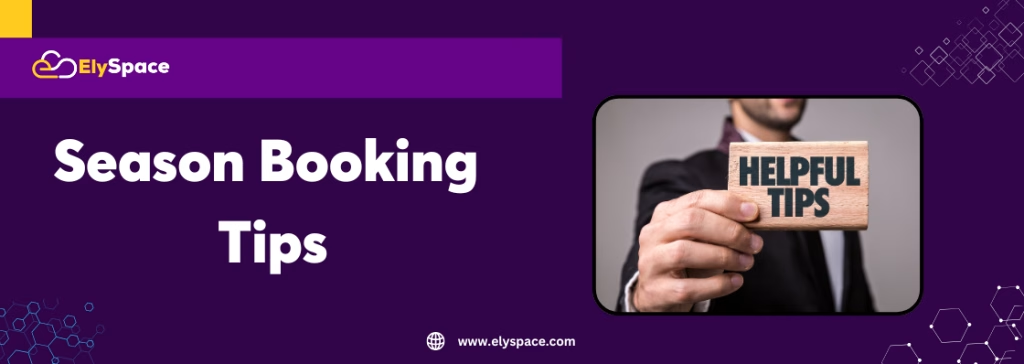
Travel calendar and online booking interface for planning a Kashmir trip by season
Spring Tips
Book accommodations 2 to 3 months in advance.
Bring allergy medicines for pollen allergies.
Outdoor activities usually occur in the morning.
Check the opening dates for the tulip gardens.
Prepare for the variability of the weather.
Summer Tips
Book reservations as early as possible.
Start with the earliest travel options to avoid the afternoon heat.
Pack rain gear for monsoon rain.
Drink plenty of water and protect yourself from sun exposure.
Plan for indoor options on rainy days.
Autumn Tips
Pack warm layers for temperature drops.
Book your accommodations to access desirable rates.
Plan photography trips during golden hours.
Visit local harvest festivals in towns.
Prepare for shorter daylight hours.
Winter Tips
Check the weather regularly
Book direct flights, if possible, and avoid connecting
Pack emergency supplies
Dress in layers
Know basic driving in winter conditions
Health and Safety

Wearing warm clothing with health kits and safety gear for high-altitude conditions
Altitude Sickness
Symptoms: Headaches, nausea, feelings of dizziness, and fatigue.
Suggestions to prevent:
Plan a gradual rise to altitude
Drink water and avoid alcohol
Rest while acclimatizing
See your doctor before booking trips to altitude.
Seasonal Health Concern
Spring: pollen allergies, even temperature changes. Summer: heat exhaustion, dehydration, and pests. Autumn: respiratory issues from dry air, Winter: hypothermia, frostbite, and seasonal depression
Safety
Safety Tips
General:
1. Review the current political situation
2. Wherever relevant, register with the local authorities
3. Keep emergency contact information accessible
4. Inform someone about your travel plans
5. Store important documents safely
Budget Considerations by Season:
Peak Season Budget (April-June, September-October)
Accommodation: ₹3000 – ₹8000 per night
Transportation: premium
Activities: at premium rates for tours and activities
Food: at premium rates when dining out
TOTAL Daily budget: ₹5,000 – ₹12,000 per person at the peak.
Shoulder Season Budget (March, November)
Accommodation: ₹2000 – ₹5000 a night
Transportation: moderate
Activities: at ordinary rates
Food: at ordinary rates when eating restaurant meals
TOTAL Daily budget: ₹3500 – ₹8000 per person in shoulder season.
Off-Season Budget (December-February, July-August)
Accommodation: ₹1,000-3,000 per night
Transportation: Minimal pricing
Activities: Discounted pricing
Food: Reduced pricing
Total Daily Budget: ₹2,500-6,000 per person.
Transportation & Accessibility
Airport Access
Srinagar Airport runs year-round, but may have delays due to the weather. April to October is the best time to connect to the airport. Possible delays in winter due to cancellations.
Road Access

Local transportation in Kashmir including shikaras on Dal Lake, taxis, and mountain roads
Highway Conditions:
Spring/Summer Conditions – Great
Monsoon Conditions – Possible landslides (Delays Possible)
Winter Conditions – Manageable with chains
Local Transportation
Seasonal Variations:
Peak Season – Generally higher prices; may need to book in advance
Off-Season – Along with both lower prices to think about, availability is much better
Winter – Limited options depending on the weather conditions
Cultural Events and Festivals
Spring Festivals
Tulip Festival (April): Celebrating Kashmir’s most beloved flower!
Baisakhi (April): A unique cultural program celebrating the harvest
Shivratri (February/March): An important Hindu festival
Summer Festivals
Amarnath Yatra (June-August): Time to pilgrimage to the sacred shrine
Saffron Festival (October): Season for harvest celebration
Eid Celebrations: Major Islamic festival celebrations
Autumn Festivals
Harvest Festivals: Local annual festivals and cultural events
Diwali (October/November): Festival of Lights
Navratri: Nine-day festival celebration for Hindus
Winter Festivals
Christmas & New Year: Celebrations of Western festivals
Lohri (January): A harvest festival of Punjab
Local Winter Festival: Cultural celebrations
Accommodation Options by Season
Luxury Accommodation
Peak season: High rates, reservations required.
Off-season: Large discounts and better availability.
Value: Shoulder season rates.
Mid-Range Hotels
Rates: Lots of availability except during peak summer.
Availability: At least a fraction of mid-range hotels will be available.
Deals: High availability in winter months and monsoon season.
Budget Accommodation
Hostels and Guesthouses: Available almost any time of year.
Homestays: Great experience, local touch;
Camping: Done seasonally for two warm months, mostly.
Houseboats
Dal Lake: Famous accommodation where you can say you stayed in a houseboat;
When to go: April to October;
When not to go: Most lay dormant during the extreme cold season.
Photography and Instagrammable Options

Photographer capturing stunning landscapes of snow-capped mountains and vibrant tulip gardens in Kashmir
Spring Photos
Tulip Gardens: Colourful carpet of flower petals; Almond Blossoms: Soft pink and soft white flower petals; Dal Lake: Shikaras gently floating near the mountains; Mughal Gardens: Traditional terraced garden shots.
Summer Photos
High Altitude: Winter top mountain snow caps; Green Meadows: Full green grass fields, thick green valleys; Adventure Sports: Any action photo; Cultural Events: Festivals and snapshots of the local life.
Fall (Autumn) Photos
Chinar Trees: Rich gold colours of autumn; Harvest Scenes & time: refreshing the local agricultural labour workload; Clear Mountains: Clean air for visibility and to capture images; Reflections: Lake still surface for reflection shots.
Winter Photos
Winter Wonderland: Winter wonderland shot; Frozen Lakes: Ice snow formations and patterns; Skiing Sport Action: Winter sports action shot; Local Life: Daily local life shots of traditional winter activity.
Food and Culinary Experiences
Seasonal Specialties
Spring: Fresh veggies & fruits
Summer: Lots of fresh legumes & veggies, refreshing drinks.
Fall: Harvest specialties, dried fruits,
Winter: Hearty, warming meals, traditional preparations.
Must-try dishes
• Rogan Josh: fragrant lamb curry • Yakhni: yogurt-based mutton curry • Kahwa: traditional Kashmiri tea• Wazwan: multi-course traditional feast • Modur Pulav: sweet rice preparation.
Restaurant availability
Peak visit: all restaurants open, full menu available. Off-peak visit: limited number of choices and seasonal closures. Winter: fewer choices; local cuisine.
Conclusion
When to go to Kashmir ultimately depends on your budget, preferences, types of activities you wish to undertake, etc. For a balanced experience, spring (April-May) is recommended. The weather will be pleasant, flowers will be blooming, and you will have good conditions for all activities. Summer (June-August) will give you the warmest weather, longest days, but lots of people and the highest prices. Autumn (September-October) will give you beautiful fall colors and comfortable weather, but with far fewer tourists. Winter (December-February) will give you a snow-covered paradise for your winter sports fixation, plus great value for budget travelers.
If it’s your first time in Kashmir, I suggest that you visit in April to May and October to November, when you can have a chance to enjoy Kashmir’s natural beauty without the challenges of extreme weather. If you’re an adventure seeker, I’d recommend visiting in June to August, for high elevation trekking, and winter sports enthusiasts should visit from December to March. If you’re a budget traveler, I suggest you look for the best value during the months of winter and the Monsoon season.
No matter when you visit Kashmir, with its stunning beauty and rich culture, you won’t be disappointed. Plan your trip around your priorities, ensure that you pack responsibly for your chosen season, and get ready to be amazed by this beautiful Himalayan perfection.
Frequently Asked Questions
Q: What is the ideal time to visit Kashmir?
A: Most tourists find that April-May is the perfect time to visit for a good experience overall, as the weather is pleasant, flowers are in full bloom, and conditions are manageable for all activities.
Q: Is Kashmir safe for travel throughout the year?
A: Absolutely. Kashmir is relatively safe for tourists year-round, although it is wise to check current situations before your trip and to follow advisories.
Q: When is the best time to get the cheapest prices?
A: The lowest prices for hotels and activities are typically January-March; however, prices inevitably come at a price, and travelers will ask travelers to adapt their travel to winter-like conditions.
Q: When can I see snow in Jammu and Kashmir?
A: Snow commonly occurs during December and February. The majority of snowfall typically occurs in January and February.
Q: Is the monsoon season a good time to visit Kashmir?
A: Rain occurs from July-August; this is a less travel-intensive time for travelers due to rain(crowds), and relatively low prices.
Q: When do tulips bloom in Kashmir?
A: The tulips in Kashmir generally bloom around mid-April till early May; therefore, if you desire to visit gardens, it is the best time to visit.
Q: How long should a Kashmir trip take?
A: A suggested minimum of 5-7 days to see the major highlights. 10-14 days is preferable for a broader experience.
This detailed guide will assist you in determining the best time to visit Kashmir based on your preferences, finances, and goals. Scheduled to your highlight seasons and weather conditions, you are sure to plan a trip that will leave you with valued memories in Paradise on Earth.

